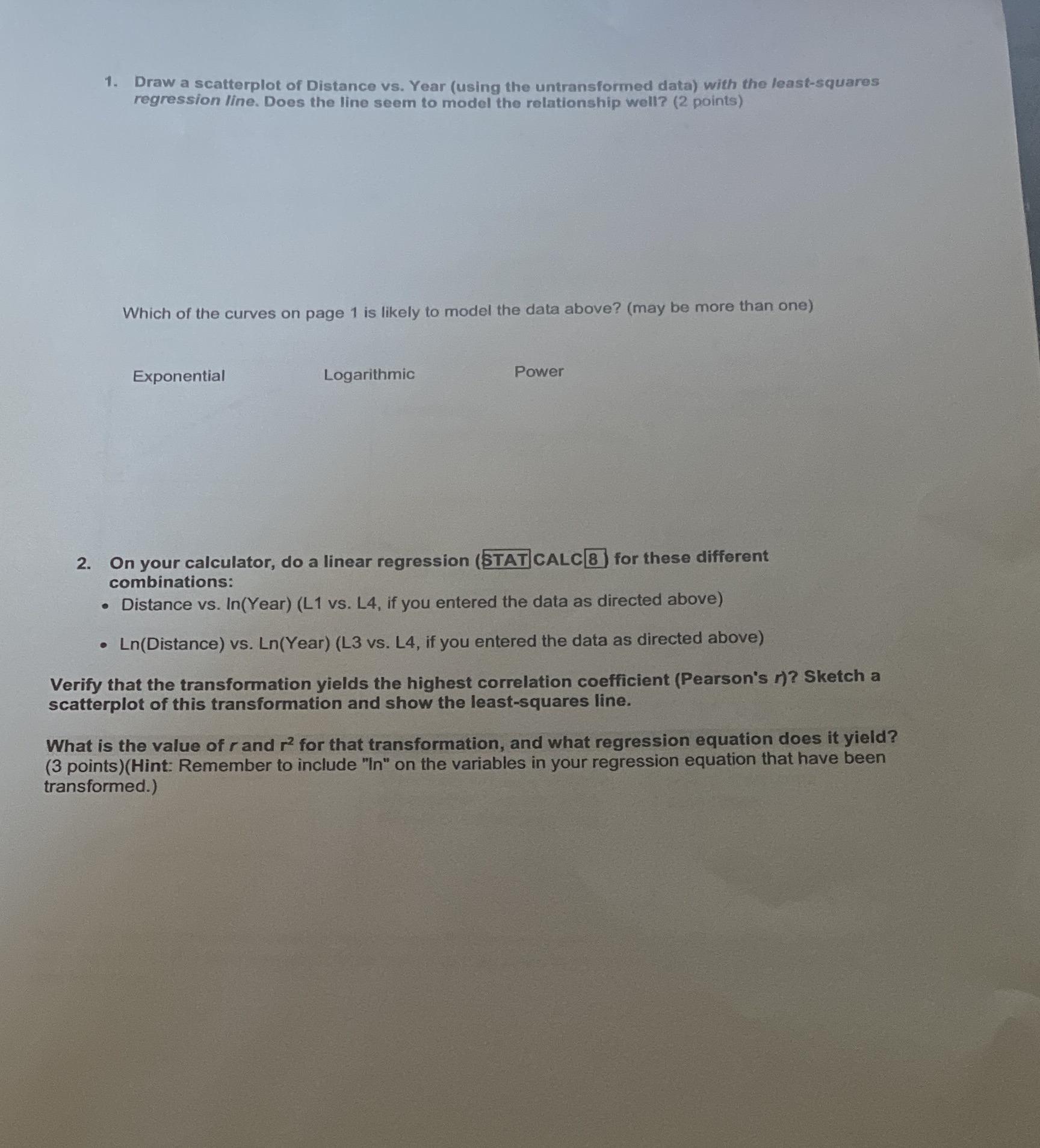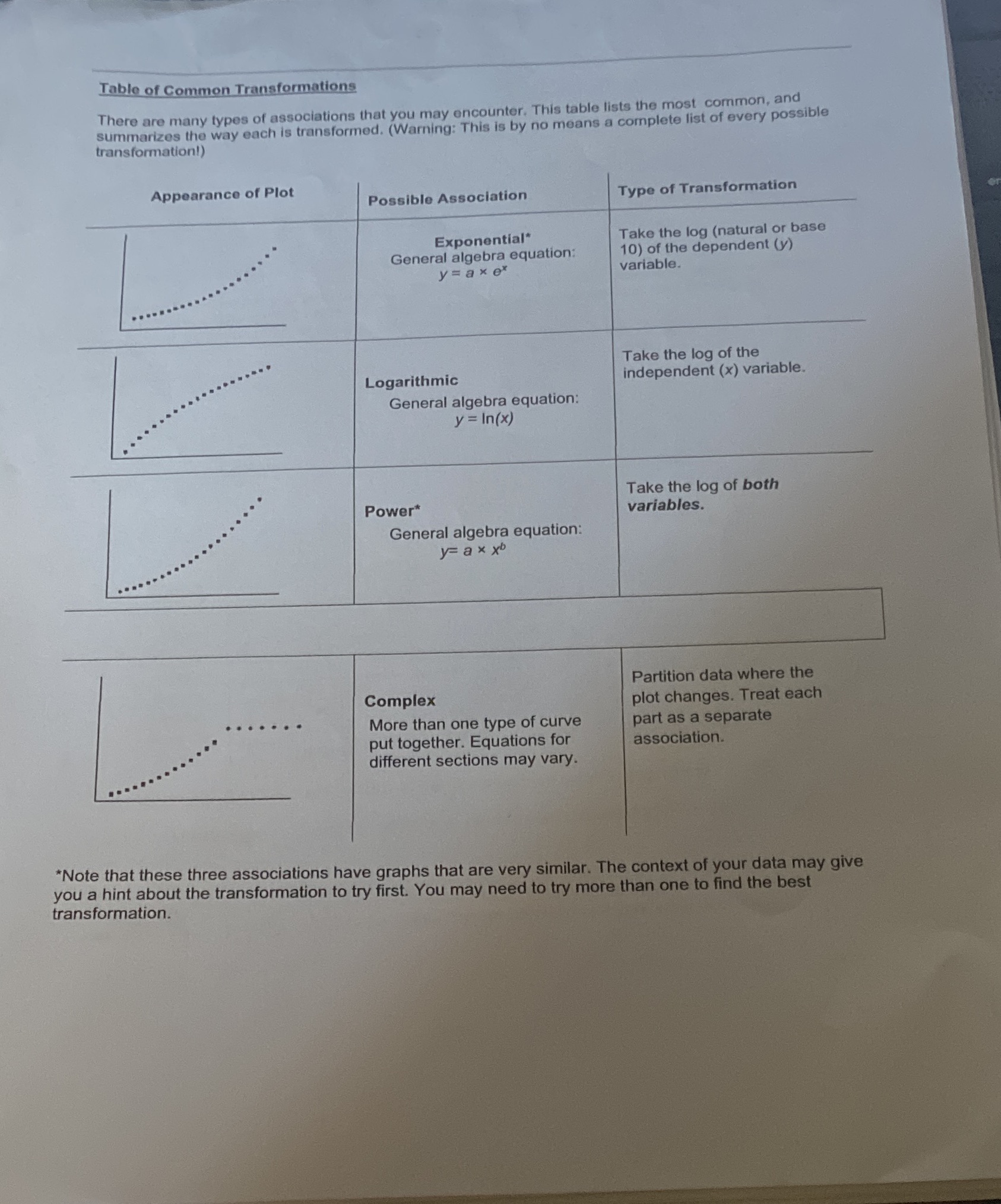Answered step by step
Verified Expert Solution
Question
1 Approved Answer
AP statistics homework (please help solve using pencil and paper) 1. Draw a scatterplot of Distance vs. Year (using the untransformed data) with the least-squares
AP statistics homework (please help solve using pencil and paper)


Step by Step Solution
There are 3 Steps involved in it
Step: 1

Get Instant Access to Expert-Tailored Solutions
See step-by-step solutions with expert insights and AI powered tools for academic success
Step: 2

Step: 3

Ace Your Homework with AI
Get the answers you need in no time with our AI-driven, step-by-step assistance
Get Started


